Virtual environment for training technologists and systems engineers in software design patterns
Entorno virtual para la formación de tecnólogos e ingenieros de sistemas en patrones de diseño de software
Main Article Content
The Lack of knowledge of design patterns is a common problem among software developers, causing the wheel to have to be reinvented many times when the developer faces different kinds of design problems, a factor that has important effects over time and time. project costs. The objective of this work is to seek that in the Antonio José Camacho University Institution (UNIAJC), in its Systems Engineering program, programming courses are strengthened with the learning of design patterns through guides and technical laboratories provided through of the UNIAJC Virtual platform.
Using a classic research methodology based on the exploration and analysis of current patterns, nine development patterns were selected that have been divided into three levels: basic, intermediate and advanced, organized in this way with the objective that they can be associated with the level of student progress with programming subjects and gradually learn design techniques that will allow them to have a common language for more effective communication and more sophisticated software design.
Downloads
Article Details
Angular. (2020). Angular. La plataforma del desarrollador moderno. https://angular.io/
Bedoya Escobar, R. A. (2020). Entorno virtual para la formación de tecnólogos e ingenieros de sistemas en patrones de diseño de software (Trabajo de grado). Institución Universitaria Antonio José Camacho, Cali, Colombia. DOI: https://doi.org/10.54278/sapienta.v13i25.90
Blackboard. (2020). Blackboard. Enseñanza y aprendizaje. https://www.blackboard.com/es-lac
Chamilo-Asociación Chamilo. (2020). Chamilo. https://chamilo.org/en/
Deperlioglu, O., & Köse, U. (2013). The effectiveness and experiences of blended learning approaches to computer programming education. Computer Applications in Engineering Education, 21. https://doi.org/10.1002/cae.20476 DOI: https://doi.org/10.1002/cae.20476
Edmodo. (2020). Edmodo. https://new.edmodo.com/?go2url=%2Fhome
Educativa. (2020). Educativa: Líderes de Iberoamérica en sistemas para formación. https://www.educativa.com/
Gamma, E., Richard Helm, Ralph Johnson, & John Vlissides (Eds.). (1995). Design patterns: Elements of reusable object-oriented software. Addison-Wesley.
Ganduxé, M. (2018). ¿Qué es el e-learning? eLearning Actual. https://elearningactual.com/e-learning-significado/
GNU General Public License. (2007, junio 29). GNU General Public License. http://www.gnu.org/licenses/gpl-3.0.txt
JavaScript. (s. f.). Documentación web de MDN. https://developer.mozilla.org/es/docs/Web/JavaScript
Moodle. (2020). Moodle—Open-source learning platform. https://moodle.org/
Moreira, M. A., Santos, M. a B. S. N., & Vargas, E. F. (2010). Buenas Prácticas De Aulas Virtuales En La Docencia Universitaria Semipresencial. Teoría de la Educación. Educación y Cultura en la Sociedad de la Información, 11(1), 7-31. DOI: https://doi.org/10.14201/eks.5787
Open edX. (2021). Open EdX. https://open.edx.org/
Pappas, C. (2015). The Top Open-Source Learning Software. ELearning Industry. https://elearningindustry.com/top-open-source-learning-management-systems
React. (2021). React – A JavaScript library for building user interfaces. https://reactjs.org/
Easy LMS. (2021). Significado de LMS: ¿Qué es un LMS? Definición explicada de LMS. https://www.easy-lms.com/es/centro-de-conocimiento/centro-de-conocimiento-lms/que-es-un-lms/item10182
Wang, F. L., Fong, J., Choy, M., & Wong, T.-L. (2007). Blended teaching and learning of computer programming. Proceedings of the 6th international conference on Advances in web-based learning, 606-617. DOI: https://doi.org/10.1007/978-3-540-78139-4_53










